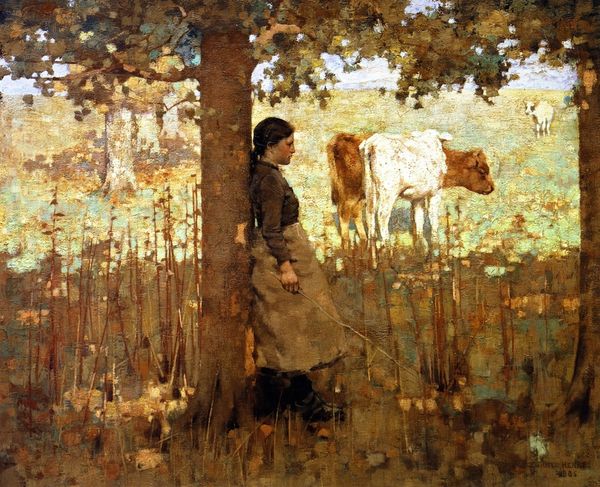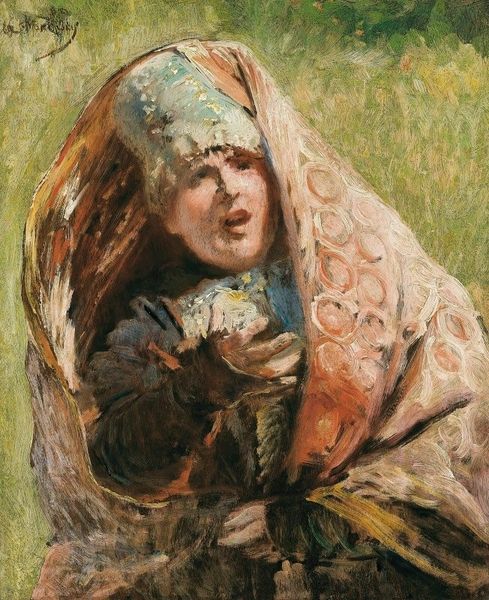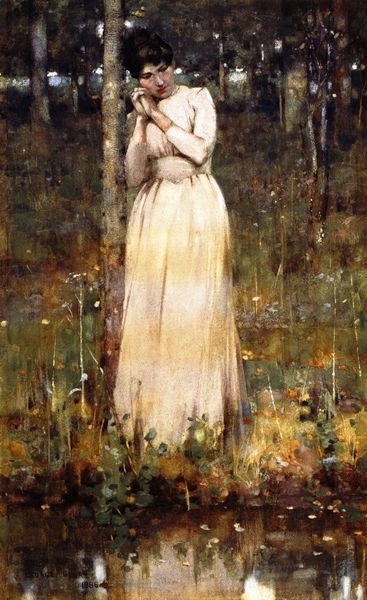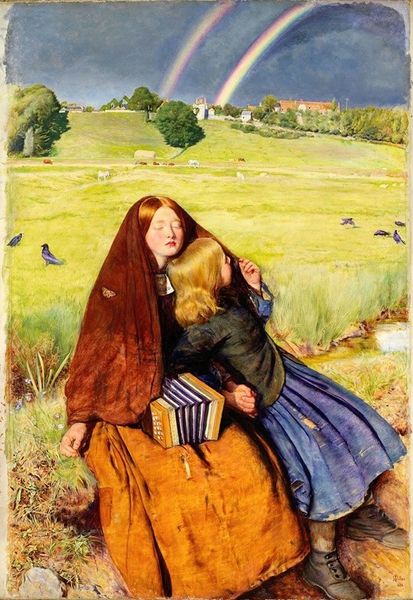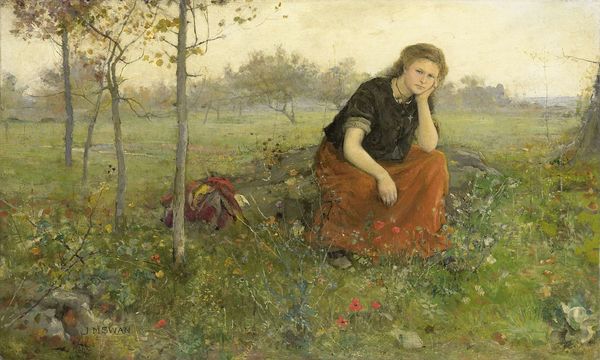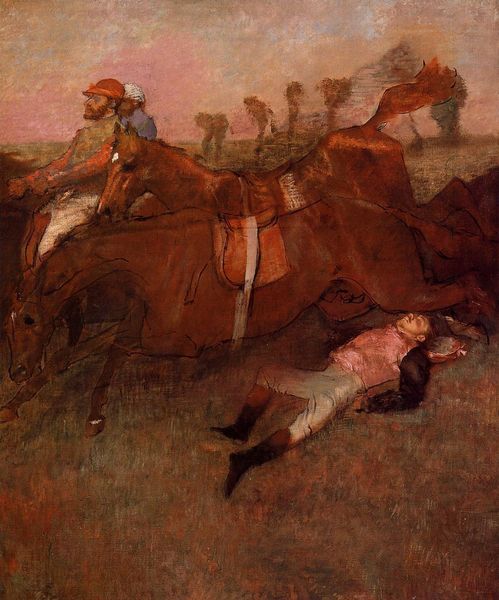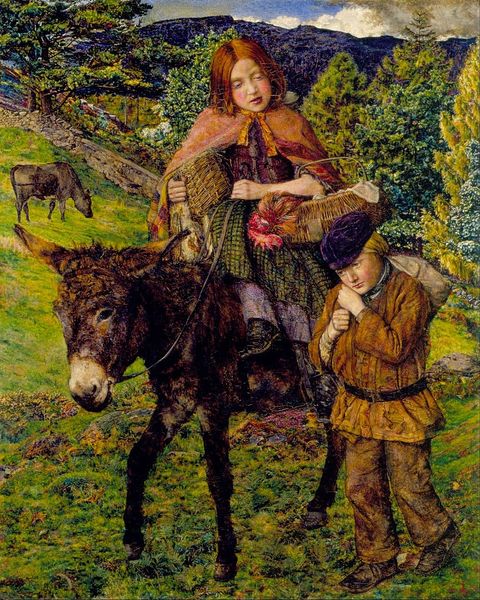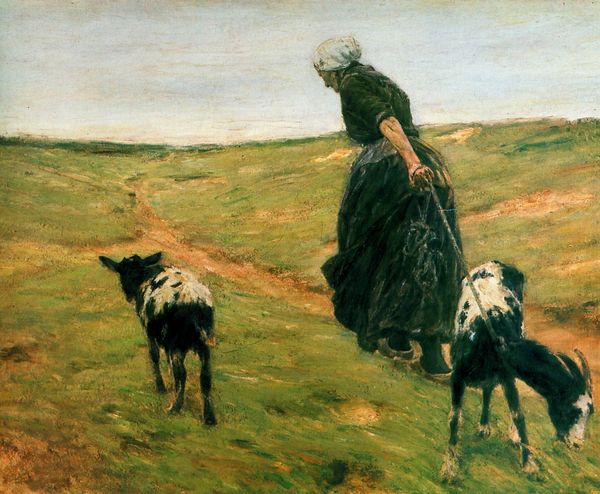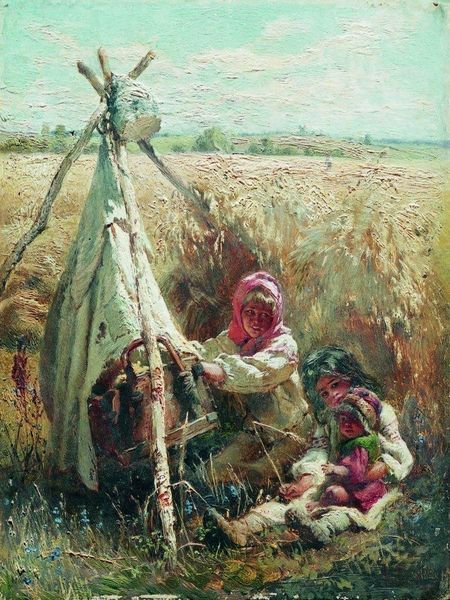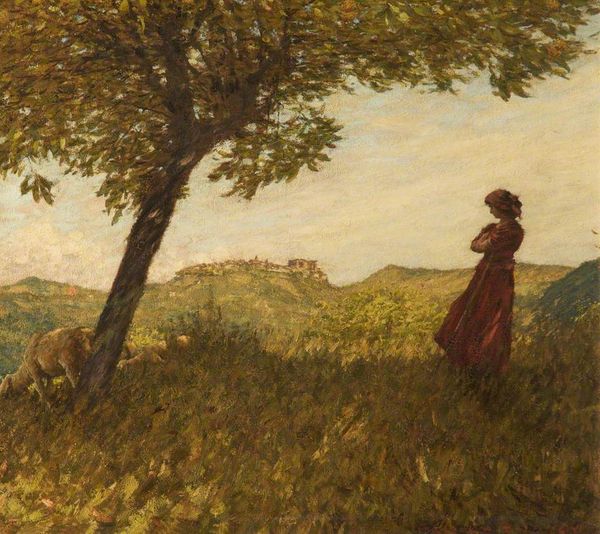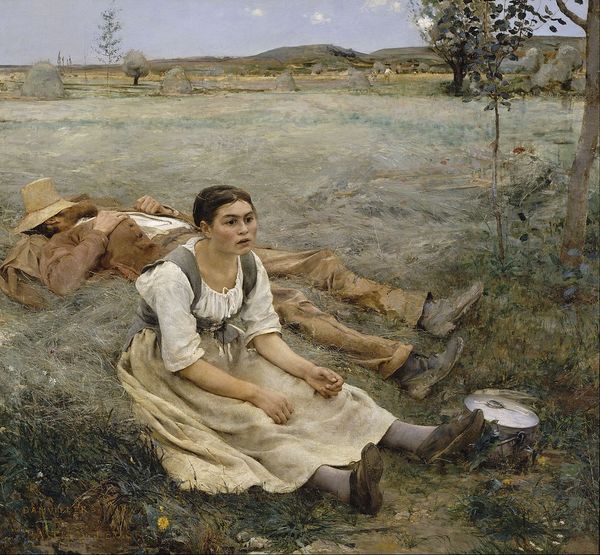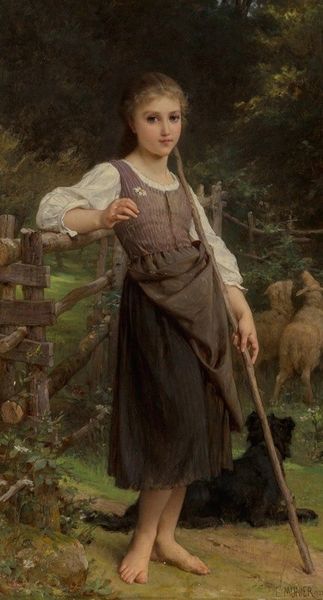
Copyright: Public domain
Editor: This is Jules Bastien-Lepage’s *Poor Fauvette*, painted in 1881 using oil paint, in the plein-air style. I find it quite haunting. The figure of the girl, wrapped in cloth, seems so vulnerable. What strikes you when you look at it? Curator: The painting’s social realism speaks volumes about the late 19th century. Consider the burgeoning industrial revolution and its impact on rural communities. This isn't just a portrait; it’s a document of social upheaval and the changing role of women and children in the workforce. Look at her gaze, so direct. Where do you think she is looking? Editor: I think she's staring right at us, the viewer, maybe even confronting us. It makes me a bit uncomfortable. Curator: Precisely. It implicates us. The placement of the figure and her dress blend into the muddy field – suggesting a life deeply embedded in the drudgery of rural poverty. Bastien-Lepage sought to portray rural life without idealizing it, moving away from earlier romantic visions, don’t you think? Editor: Definitely. It’s a stark contrast to the idealized pastoral scenes often depicted. Do you think this realism helped shift the public's perspective on rural poverty at the time? Curator: It certainly contributed to a growing awareness. Images like this were exhibited in major salons, sparking conversations and critiques of the socio-economic conditions that allowed such hardship to exist. This art made visible what many in power preferred to ignore, prompting debate and reform, albeit gradually. Editor: It's fascinating how art can be both beautiful and a tool for social change. This painting has given me a lot to think about. Curator: And hopefully, it will encourage viewers to consider art as a powerful force in shaping public perception and prompting critical reflection on social issues.
Comments
No comments
Be the first to comment and join the conversation on the ultimate creative platform.
